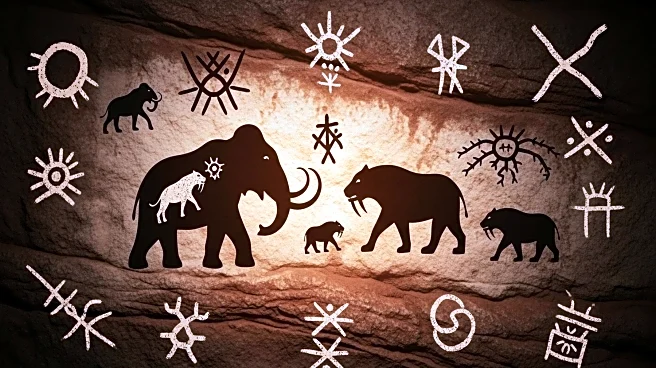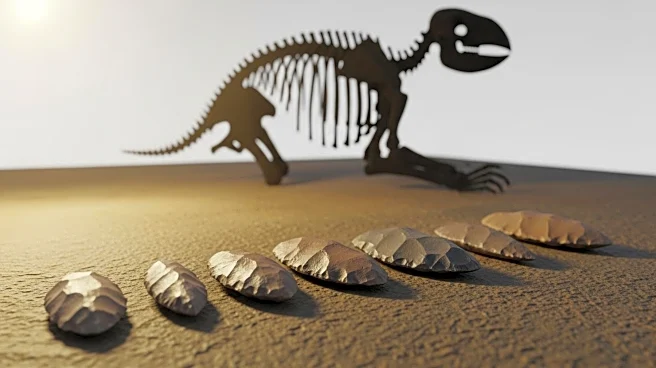What is the story about?
What's Happening?
A team of archaeologists in Argentina has uncovered evidence that early humans in southern South America primarily consumed extinct megafauna, such as giant sloths and armadillos, around 13,000 to 11,600 years ago. The study, published in Science Advances, challenges the prevailing theory that climate change was the main driver of these species' extinction, suggesting instead that human hunting played a significant role. Researchers analyzed bones from 20 sites in Argentina, Chile, and Uruguay, finding that megafauna constituted over 80% of the remains at 15 of these locations. The study indicates that these large animals were targeted for their energy-rich meat, which provided substantial returns for the effort involved in hunting them.
Why It's Important?
This discovery has significant implications for understanding the role of humans in the extinction of Ice Age megafauna. It suggests that human hunting pressure was a more critical factor than previously thought, potentially rewriting the narrative of human impact on prehistoric ecosystems. The findings could influence current debates on human-driven extinctions and conservation strategies, highlighting the need to consider historical human interactions with wildlife. Additionally, this research may inform discussions on sustainable hunting practices and the management of modern megafauna species.
What's Next?
Further research is likely to explore the extent of human impact on megafauna extinctions globally, potentially leading to new insights into prehistoric human behavior and environmental management. Archaeologists may continue to investigate other regions to determine if similar patterns of megafauna consumption existed elsewhere. The study could also prompt a reevaluation of conservation strategies, emphasizing the importance of understanding historical human-wildlife interactions in shaping current ecosystems.
Beyond the Headlines
The study raises ethical questions about the role of humans in altering ecosystems and the responsibility to mitigate such impacts today. It also highlights the cultural significance of megafauna in human history, potentially influencing how societies view their relationship with nature. Long-term, this research could contribute to a broader understanding of human evolution and adaptation, offering insights into how early humans managed resources and survived in challenging environments.
AI Generated Content
Do you find this article useful?















